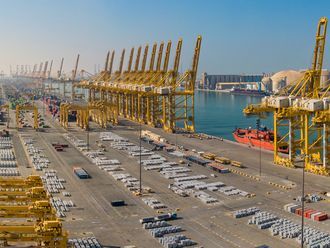Istanbul
Turkey’s central bank is doing everything it can to stall the lira’s plunge against the dollar — except aggressively raise interest rates.
In the last month, it has used a string of fringe tools to prop up the lira and cut banks off from cheaper sources of funding. The measures haven’t yet shored up the currency, which fell to a record low against the dollar on Wednesday. Investors are concerned that the central bank is under pressure from President Recep Tayyip Erdogan, who argues that high rates are a cause of inflation rather than a tool to control it. He said last week that the bank’s policy was on the “wrong path.”
Here’s a breakdown of the tools policymakers have opted for so far:
FX boost
On November 6, the central bank reduced the amount of foreign currency lenders needed to park as reserves with the regulator, freeing up $1.4 billion of foreign exchange for banks while siphoning out the same amount of local currency from the market.
Exporter loans
On the same day, it introduced a measure allowing exporters to repay as much as $5 billion of foreign-currency loans due through Feb. 1 in liras at favourable rates. In doing so, the bank forfeited a source of hard currency to build its currency reserves, though it was also intended to reduce pressure on the lira by removing some foreign-exchange demand from the market.
Forwards
With the lira still dropping, the regulator on Monday began auctioning non-deliverable forward contracts to allow companies with foreign-currency liabilities to protect themselves by locking in exchange rates. It plans to sell as much as $3 billion in one-, three- and six-month contracts through the end of the year. They will be settled in liras, which means the operation won’t eat into the central bank’s reserves, it said.
Tighter liquidity
On Tuesday, the central bank said it was cutting lenders off from its 9.25 per cent interbank overnight rate — the source of about 10 per cent of their funding — meaning that all financing from Wednesday would be delivered via its late liquidity window at 12.25 per cent. That lifts the effective borrowing cost for Turkish banks by 25 basis points, and puts it on par with the upper band of Turkey’s main so-called interest-rate corridor.
What’s next?
The regulator will likely drive borrowing costs higher with “measured hikes” to the late liquidity window before its next scheduled meeting on Dec. 14, said Phoenix Kalen, a strategist at Societe Generale in London. The outlook for the lira remains “bleak,” at least until the central bank shows “further willingness to pull up the weighted cost of funding,” she said.
Investors on Tuesday were nearly unanimous that the central bank has little choice but to raise rates — putting it on a collision course with Erdogan that Governor Murat Cetinkaya had until recently managed to avoid.
The currency fell 0.5 per cent to 3.9742 per dollar as of 3:25pm in Istanbul, having earlier slid as much as 0.7 per cent to a record low 3.9826.
“There is huge pressure on the lira, and at some point the Turkish central bank needs to take a bold decision,” said Ogeday Topcular, a fund manager at RAM Capital in Geneva. “Sooner or later the central bank will have to do what they think would stop the bleeding, and my guess is that this would be a rate hike.”












